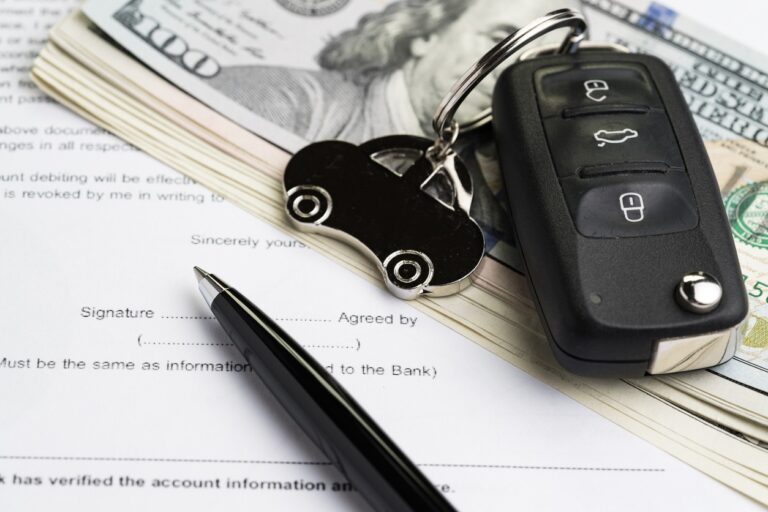On this page
What's next
Earn a high-yield savings rate with JG Wentworth Debt Relief
Can You Use a Personal Loan to Buy a Car?
by
JG Wentworth
•
October 20, 2025
•
7 min

When most people think about buying a car, they immediately picture an auto loan — you know, the kind offered through dealerships or banks that’s tied specifically to the vehicle you’re buying. But a personal loan can also be used to purchase a car, and depending on your situation, it might make more sense.
This guide breaks down how personal loans can be used to buy a car, how they compare to traditional auto loans, and what to think about before you decide which is right for you.
*This information is provided for educational and informational purposes only. Such information or materials do not constitute and are not intended to provide legal, accounting, or tax advice and should not be relied on in that respect. We suggest that You consult an attorney, accountant, and/or financial advisor to answer any financial or legal questions. Loan eligibility and terms vary by lender and jurisdiction.
What Is a Personal Loan?
A personal loan is a type of installment loan that gives you a lump sum of money upfront, which you repay over time with fixed monthly payments. These loans are usually unsecured, meaning they don’t require collateral like a car or house.
Borrowers can use a personal loan for almost anything — debt consolidation, home improvement, travel, medical bills, or yes, even to buy a car.
Personal loans are typically available through banks, credit unions, and online lenders, with repayment terms ranging from one to seven years and interest rates based on your credit profile, income, and debt-to-income ratio.
How Using a Personal Loan to Buy a Car Works
If you take out a personal loan to buy a car, the process is fairly straightforward:
- Apply for a loan – You choose a lender, fill out an application, and get approved for a certain loan amount.
- Receive funds directly – Unlike an auto loan, where the lender pays the dealership directly, a personal loan typically gives you the cash upfront.
- Buy your car outright – Once the funds hit your account, you can use them to purchase a car from a dealership, a private seller, or even an auction.
- Make fixed monthly payments – You’ll repay your personal loan in fixed installments over the agreed term.
That flexibility is one of the biggest advantages — you’re not limited to vehicles that a specific lender or dealer approves.
Apply for a personal loan
Apply for a personal loan
Why Someone Might Choose a Personal Loan for a Car Purchase
There are several reasons a buyer might consider using a personal loan instead of a traditional auto loan:
1. Buying from a Private Seller
If you’re purchasing a used car from an individual — say, off Craigslist or Facebook Marketplace — some auto lenders won’t finance the purchase. A personal loan gives you more freedom to buy where and how you want.
2. Buying an Older Vehicle
Auto lenders often have restrictions on the age or mileage of a vehicle. For example, they might not finance a car that’s more than 10 years old or has over 120,000 miles. A personal loan doesn’t usually have those restrictions.
3. Avoiding Collateral
With a traditional auto loan, your car serves as collateral. If you fall behind on payments, the lender can repossess the vehicle. A personal loan is typically unsecured, meaning you don’t risk losing your car if you default — though your credit will still take a hit.
4. Simpler Ownership
Because you pay cash for the car, the title is in your name from day one. You won’t have a lienholder listed on your registration, which can make it easier to sell or trade in later.
5. Negotiation Power
Dealerships and private sellers often prefer cash buyers because it simplifies the transaction. Having a personal loan in hand can give you leverage to negotiate a lower purchase price.
Potential Downsides of Using a Personal Loan
While there are some clear advantages, using a personal loan to buy a car also comes with tradeoffs:
1. Higher Interest Rates
Personal loans tend to have higher interest rates than auto loans, especially if you have average or fair credit. That’s because personal loans are usually unsecured, so lenders take on more risk.
For example, someone with good credit might qualify for a 6% APR on an auto loan but could face 9%–12% or higher on a personal loan. Over a few years, that difference can add up to hundreds or even thousands of dollars.
2. Shorter Repayment Terms
Auto loans often stretch up to 84 months, while personal loans typically cap around 60 months. That shorter timeline can mean higher monthly payments, even if the loan amount is similar.
3. No Collateral Can Mean Stricter Approval
Because lenders can’t repossess the car to recoup losses, they may require a stronger credit profile or lower debt-to-income ratio to approve the loan.
4. Limited Access to Special Deals
Dealerships often run financing promotions — like 0% APR or cashback offers — that you’d miss out on if you’re paying with a personal loan.
Comparing Personal Loans vs. Auto Loans
Feature | Personal Loan | Auto Loan |
Collateral Required | Usually no | Yes (the car) |
Interest Rate | Typically higher | Typically lower |
Loan Term | 1–7 years | 2–7 years |
Eligible Vehicles | Any | Must meet lender’s criteria |
Who Gets the Funds | You | Dealer or seller |
Ownership | Immediate | Lender holds lien until paid off |
If your credit score is strong and you qualify for a low-interest personal loan, it could be a flexible alternative. But if you’re eligible for dealer financing with promotional rates, an auto loan usually costs less in the long run.
When Using a Personal Loan Might Make Sense
Here are some scenarios where a personal loan could be the smarter choice:
- You’re buying a used car from a private seller or family member
- You want to avoid putting the car up as collateral
- You’re purchasing an older or specialty vehicle that traditional lenders won’t finance
- You already have a great credit score and can secure a competitive rate
However, if you’re purchasing a newer vehicle from a dealership and qualify for low-rate financing, an auto loan is usually the more affordable option.
How to Get a Personal Loan for a Car
If you’ve decided a personal loan is the right move, here’s how to get started:
- Check your credit – Review your credit score and report before applying. Strong credit can help you qualify for lower rates.
- Compare lenders – Look at banks, credit unions, and online lenders. Pay attention to APRs, loan terms, and fees.
- Get prequalified – Many lenders offer soft credit checks for prequalification, allowing you to see your estimated rate before applying.
- Apply for the loan – Complete a full application with your chosen lender.
- Receive and use funds – Once approved, funds are typically deposited into your bank account within a few days.
- Buy your car – Pay for your vehicle outright and complete the title transfer.
Alternatives to Using a Personal Loan
Before you sign on the dotted line, consider other ways to finance your car purchase:
- Auto loans through your bank or credit union – Often have lower rates, especially for new cars.
- Dealer financing – Can offer promotional rates or manufacturer incentives.
- Home equity loan or HELOC – For homeowners with equity, these may offer lower rates, though they involve more risk.
- Cash savings – If possible, paying outright can save on interest altogether.
Final Thoughts
Yes, you can use a personal loan to buy a car — and for some buyers, it’s the best option. The flexibility to purchase from anyone, avoid collateral, and take immediate ownership are all appealing benefits.
But personal loans also come with higher interest rates and shorter repayment terms than typical auto loans, which can make them more expensive over time.
If you’re considering it, compare rates from multiple lenders, weigh the total cost of borrowing, and think about how long you plan to keep the car. With the right planning, a personal loan can be a convenient way to get behind the wheel without traditional financing limits.






